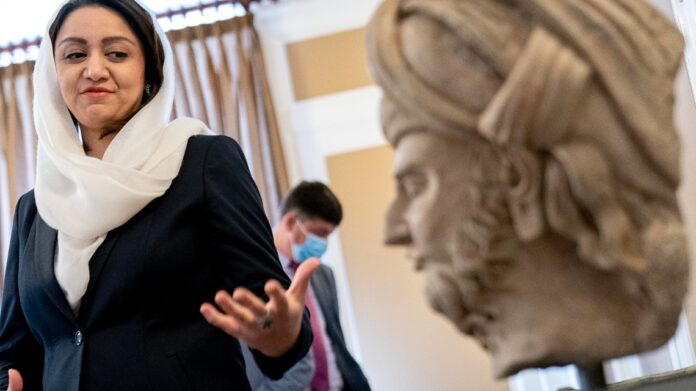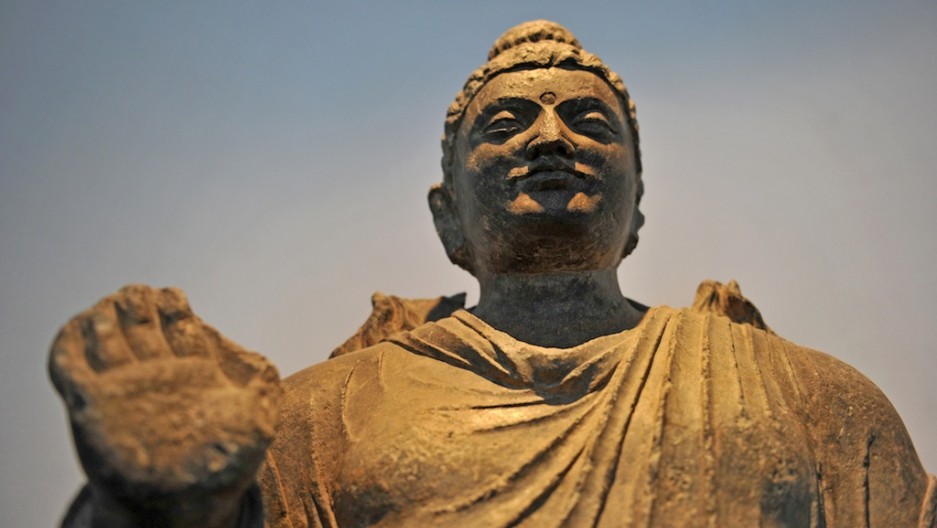
The Manhattan District Attorney announced that 33 cultural artifacts worth about $ 1.8 million were returned to Afghanistan after authorities discovered them among more than 2,500 looted antiques held in the collection of notorious New York art dealer Subhash Kapoor. District Attorney Sai Vance, at the repatriation ceremony attended by the Afghan Ambassador to the United States, said that cultural crimes involving looted and stolen religious relics, such as the nearly two dozen Buddhist statues repatriated today to the people of Afghanistan, are not only destroying the social fabric of nations but and deprive millions of believers around the world of the most ancient sacred symbols of their faith.
Over the past few months, the Manhattan District Attorney has repatriated 338 items from the Kapoor collection to their countries of origin, including India, Pakistan, Nepal, Afghanistan, and Sri Lanka. Kapoor has languished in prison in Chennai, India since his arrest in 2012, has been charged with organizing a large smuggling network specializing in religious artifacts from South and Central Asia.

According to a 2018 Standard Charter Bank report, the illicit antiquities trade is a multi-billion dollar global industry that benefits not only secular art lovers such as Kapoor and his Manhattan clients but is often the main source of funding for criminals and militants groups on the supply side.
Catherine de Bolle, executive director of Europol, said after a major crackdown on the illicit antiquity trade last May that it should not be looked at in isolation from the fight against drug and arms trafficking. She also added that they know the same bands are involved because it brings in a lot of money.
The looting of cultural property in active war zones such as Afghanistan is considered a war crime under the 1954 Hague Convention.

“Historical or cultural artifacts allow people to become familiar with national heritage and these items should not be offered as souvenirs for sale to the highest bidder,” said Peter S. Fitzhugh, Special Agent in charge of the investigation US National Security in New York
, who oversees the District Attorney’s Antiquities Division.

“Preserving Afghanistan’s heritage and history paves the way for the growth of civilization and society,” Afghan Ambassador Roya Rahmani said after receiving the artifacts. “These restored works are indispensable elements of Afghanistan culture and rich history. It is my greatest honor to help them return home. ”
Precious relics of Afghanistan’s ancient past are returning home as the country faces growing uncertainty about its future

The United States handed over to the Afghan government a collection of 33 cultural artifacts seized from a New York art dealer who, according to authorities, was one of the most common antiquities smugglers in the world.
Now, after a brief display at the embassy in Washington, masks, sculptures, and other items, some of which date back to the second and third centuries, are heading to Kabul, where they are expected to be on display at the National Museum. This is the same museum where the Taliban destroyed the cultural artifacts in 2001 as part of a cultural frenzy rooted in a fundamentalist version of Islam, in which depictions of the human form are considered offensive.
The Taliban are now in power. But he controls much of the country outside Kabul amid stalled talks with the government and the looming withdrawal of US and NATO forces after two decades of war. Rahmani acknowledges that this is a challenging time.
The USA president Joe Biden has already announced that the US would withdraw all its troops by September, the 20th anniversary of the attacks. They led to the US invasion to oust the Taliban in 2001 for allowing al-Qaeda to operate out of Afghanistan.
Prior to the 9/11 attacks, the Taliban had already gained international renown for enforcing a harsh form of the Islamic law that kept women out of the public eye and for destroying – with rockets, shells, and dynamite – the famous giant sixth-century sandstone Buddha statues.

The destroyed statues were on the ambassador’s mind as she prepared to send the cultural artifacts back to Afganistan. A sandstone Buddha fresco adorns a room at the embassy where visitors gathered this week to see the relics.
These items are returned to the government and people who value their past and ensure they are preserved for future generations and Afghanistan culture in general.
Some of the cultural artifacts depict Buddha. According to Fredrik Hiebert, an archaeologist and National Geographic researcher who studies the country, the artifacts reflect the multicultural influence on Afghanistan, an important center of trade and commerce.
There are at least 2,600 archaeological sites across the country that have helped confirm the authenticity of some items after they were confiscated by federal agents. Afghanistan culture is one of the richest in the world. This country is significantly rich in history and archeology. For 6,000 years there’s been civilization based in Afghanistan.
This also makes Afghanistan an attractive target for marauders, which is why the items ended up in the United States.














![Is This the Right Time to Introduce Yourself to an Art-World Power Player? [Cartoon]](https://usaartnews.com/wp-content/uploads/hYWouQ5jmisIeqyVDFxnCkRj18q2qQ8iAiERjW4l-80x60.jpg)









